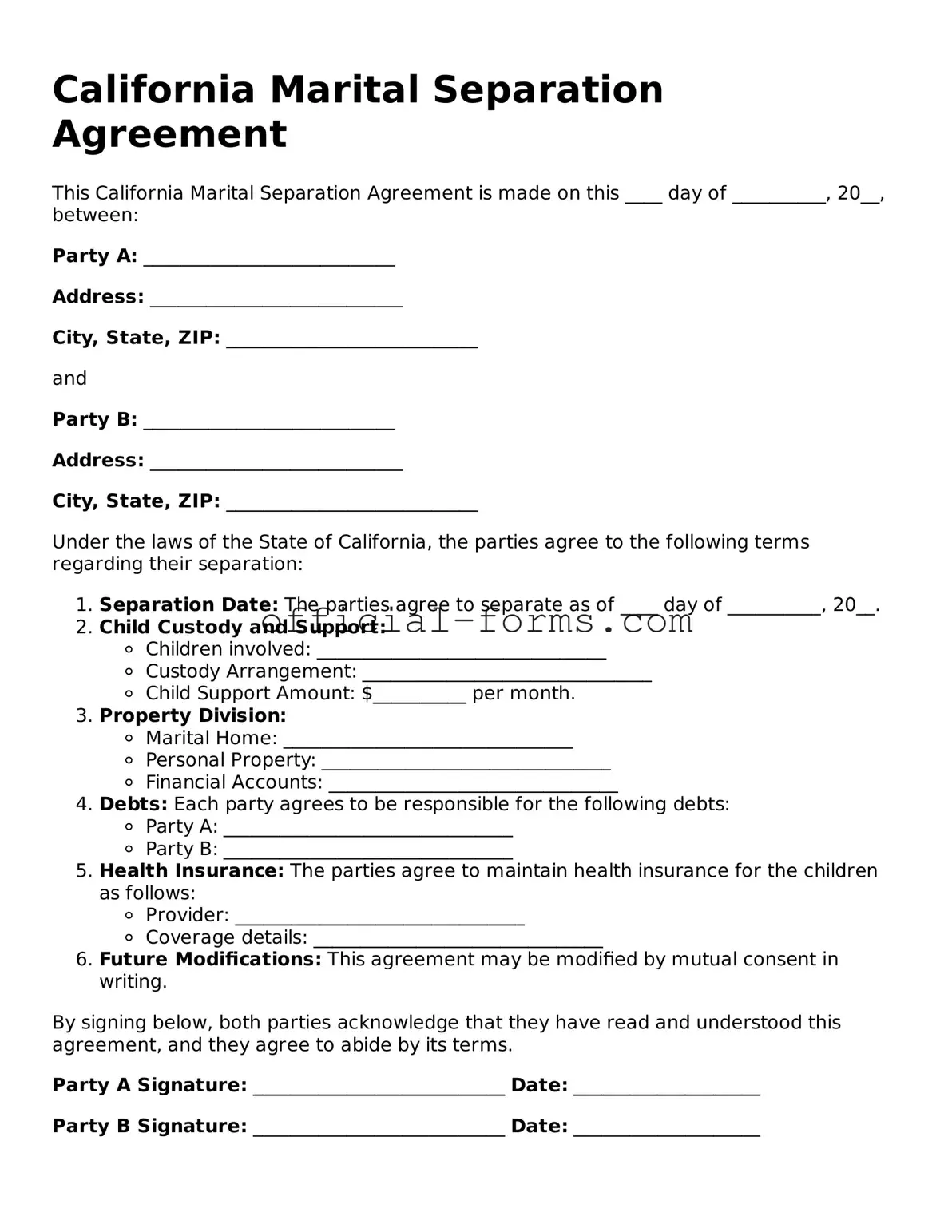Completing a California Marital Separation Agreement can be a complex task, and many individuals make common mistakes that can have significant implications. One frequent error is failing to provide accurate information about assets and debts. When parties do not fully disclose their financial situation, it can lead to disputes later on. It is crucial to list all property, including real estate, vehicles, bank accounts, and any outstanding debts.
Another common mistake is neglecting to address child custody and support issues. Parents often assume that verbal agreements will suffice, but without clear written terms, misunderstandings can arise. The agreement should specify custody arrangements, visitation schedules, and child support obligations to ensure both parties understand their responsibilities.
Additionally, individuals sometimes overlook the importance of including a detailed division of property. Simply stating that property will be divided can lead to confusion. It is advisable to outline who will receive which assets, how debts will be managed, and any other relevant financial arrangements.
Many people also forget to consider tax implications. Failing to address how assets will be taxed can result in unexpected financial burdens after the separation. Consulting a tax professional may be beneficial to understand the consequences of property transfers and support payments.
In some cases, individuals may rush through the form without thoroughly reviewing it. This haste can lead to errors or omissions that could invalidate the agreement. Taking the time to carefully read and revise the document can prevent future complications.
Another mistake is not having the agreement notarized. While notarization is not always required, it can add an extra layer of legitimacy to the document. A notarized agreement may be more readily accepted by courts and financial institutions.
People often fail to seek legal advice before finalizing their agreement. While it may seem tempting to handle the process independently, the nuances of family law can be challenging to navigate. Consulting with a lawyer can provide clarity and ensure that all legal requirements are met.
Moreover, some individuals neglect to include provisions for future changes. Life circumstances can change, and it is wise to include terms that allow for modifications to custody or support arrangements. This foresight can save time and conflict down the road.
Additionally, a lack of clarity in language can create misunderstandings. Using vague terms can lead to differing interpretations of the agreement. Clear, precise language helps ensure that both parties have a mutual understanding of their obligations and rights.
Finally, individuals sometimes forget to keep copies of the signed agreement. After the separation, having access to this document is essential for reference and enforcement. It is advisable to store copies in a safe place and share them with relevant parties, such as financial institutions or legal representatives.
